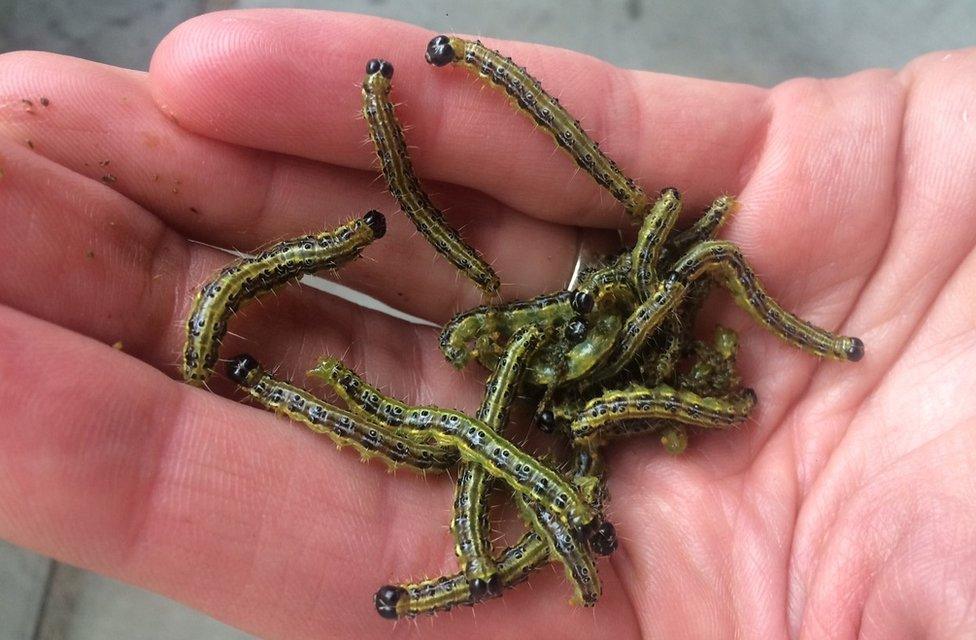Invasive caterpillar 'could spread in UK'
- Published

The caterpillars can devour a box hedge within days of hatching
An invasive caterpillar that feeds on hedges is starting to spread from its established base in London across the UK, experts warn.
The box tree caterpillar is the larval stage of a moth native to the Far East and India.
An infestation can reduce the glossy green leaves of a box hedge to a faded skeleton within a few days of hatching.
The Royal Horticultural Society (RHS) says it is now receiving three or four reports of infestations a day.
There have been more than 150 reports already this year, compared with 20 last year, and just three in 2011.
Initially limited to a small area of south west London, there have now been reports of the box tree caterpillar (Diaphania perspectalis) in areas outside the M25 and in Essex.
Dr Hayley Jones, an entomologist with the RHS, said: "The key thing is that it is established - it has survived throughout the winter and is breeding. It has a foot in the door and is now building up in numbers."
The moth first became established in Europe in 2007 and was first reported in the UK in 2008. By the end of 2014 it became apparent that it had established itself in some parts of London.
Experts believe that it originated in China and either flew across the English Channel or stowed away in containers of imported plants.
Caterpillar camo
The gluttonous caterpillars can be difficult to spot until they have already laid waste to a plant. The moths lay overlapping sheets of pale yellow eggs on the underside of box leaves.
Once hatched, the larvae begin chomping their way through their host plant. Reaching around 4cm long, they spin webs around leaves and twigs to conceal and protect themselves.
Made from a similar material to spider silk, these fibres are incredibly sticky and strong, which makes it difficult for pesticides to penetrate.
It's thought that two to three generations of moth can hatch in a year.
The caterpillar is different to box blight, a fungus that has caused havoc in gardens across the UK.
However, Dr Jones said: "This is a double whammy for box. It's beginning to look like it could be as devastating as box blight.
"The best way to get rid of the caterpillars is to pick them off and squish them. Or to put them in the freezer, which kills them."
Traditional feature
Box plants are not commonly found in the wild and aren't noted as being havens for wildlife or insects. But box topiary can give a sculptural definition that is much prized by gardeners.
They have been a feature of formal English gardens for hundreds of years, and individual plants can survive for decades.
Penny Tham returned from her 10-day holiday to find the 40-year-old box balls in her Fulham garden decimated.
"It's devastating, like a bereavement. The speed is extraordinary. One of mine is practically dead and it only started showing signs a couple of days ago," she explained.
Topiary expert James Crebbin-Bailey clips the box of some of the most prestigious gardens in the UK. He is having a pheromone trap installed in his garden in Twickenham because of the threat posed by the moth.
"The caterpillars just eat the whole thing, it's unreal," he told BBC News.
"But if you are vigilant and keep checking, you can stop them spreading. The first line of defence is to use a pheromone trap to kill the adult moths. Then use a pesticide, or you can pick them off and squash them."
Follow Claire on Twitter, external.